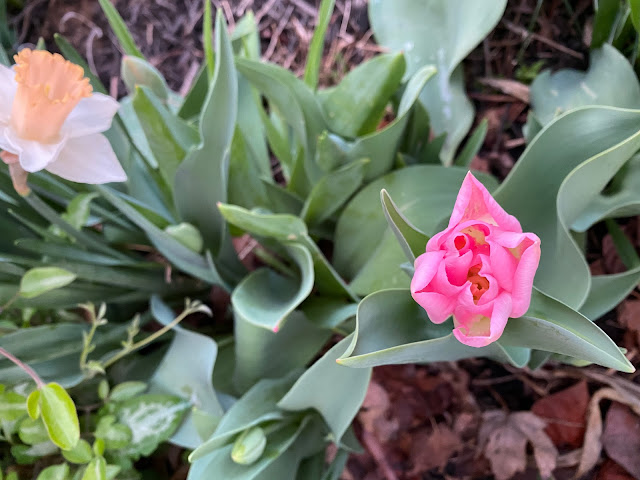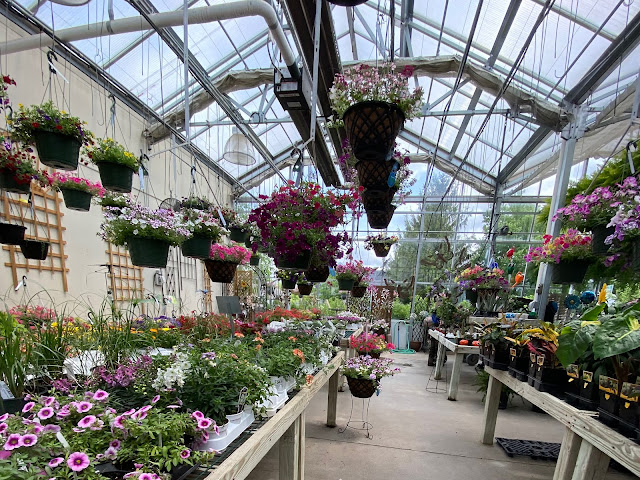Featured
- Get link
- X
- Other Apps
4 Mistakes Gardeners Often Make In Their Spring Garden
Ensure Summer Success By Avoiding These Four Mistakes In The Spring Garden
Spring is my favorite season for a number of reasons, but the greatest is that it brings about a sense of rejuvenation. After spending weeks and months in the dull, gray weather of snow and slush, springtime glows in a chartreuse green of new growth under blue skies and warmer temperatures. Mother Nature likes to tease the warmer weather and then take it away again with cold snaps and hard frosts. You, like me, may be drawn to jump start work in the garden as the temps warm but here are a few common mistakes even the most seasoned gardeners make in the spring.
Cleaning Out Garden Beds Too Early In The Season
This first one is perhaps the most controversial if controversy exists in the gardening world (spoiler alert: it does), so I'll share both the pros and cons of this. Many a gardener is tempted to clean out their garden beds of debris when presented with a spell of warm days in the forecast, but here's why you should ignore temptation.
All of that "unwanted" debris acts as a natural (and free) mulch for your plants, protecting them from the cooler weather. There are also a lot of beneficial insects that overwinter in the debris until they emerge in warm temperatures. If you clean out their nesting space, you will also reduce the population of good insects before they have a chance to hatch.
The flip side of this is that extra debris around the base of your plants may limit air flow and could contain diseased foliage. There are also a number of insects that may be detrimental to your plants that might overwinter with the beneficial ones. The best way to combat this is remove diseased foliage from a plant at first sight and actively combat the detrimental insects during the summer with insecticides or other methods.
What If There Is Limited Time For Gardening?
Ultimately, I advocate for working in your garden when you have the time. There are so many reasons why our time is limited, so use the time you have but tread carefully. If you have an abundance of time, then you can wait a little later in the season to tackle clean up efforts.
Pruning Plants Back Too Far And Too Early
Pruning plants can be an art form as seen in the many topiaries, hedges, and espaliered trees. However, done improperly or at the wrong time, pruning can reduce seasonal blooms, open up the plant to disease, or cause the complete loss of your plant. For example, big leaf hydrangeas bloom on old wood and require pruning directly after the previous season’s bloom while panicle or smooth hydrangeas bloom on new wood and can be pruned later in the season. It is important to read the plant tag to learn the timing of when to prune, but you must also look into how to prune each plant. Roses and fruit trees are two examples of plants that need specific cuts to encourage proper shaping.
Pruning Tip
Sanitizing your pruners with isopropyl alcohol between plants is a good method to help prevent disease from cross contamination as you cut back perennials and more.
Applying Fertilizer Too Early In The Season
In the excitement for plants to grow bigger and better this season, gardeners may be tempted to apply fertilizer early in the season to encourage quick growth. This can be detrimental to both the plant and your budget.
If applied while a plant is still in winter dormancy, the fertilizer may go unused by the plant, lose potency, and require reapplying later in the season increasing the cost. If the plant happens to break dormancy and utilize the fertilizer, it may contribute to an excess of tender growth earlier in the season which could be damaged by late freezes and frosts. Some plants, like bulbs, are best fertilized just after blooming while others may require more applications throughout the growing season. Gardeners will need to do a little research on each plant to determine the best time to apply fertilizer.
Planting Annuals And Other Plants Too Early
The last, but probably most likely mistake, for any gardener to make is planting annuals and other plants too early in the season, especially for those who live in a northern location. If you plant frost tender annuals outdoors too early you will run the risk of those plants being damaged or destroyed by an unexpected late season frost or freeze.
Each year around the same time, I see my favorite garden centers and greenhouses putting out a familiar and friendly warning for customers to protect their new plant purchases from cooler temperatures. I've also witnessed more than one unhappy customer in those same garden centers and greenhouses upset at the checkout counter because they didn't realize a freeze was going to destroy their newly planted petunias. The best way to avoid this is to look up your growing zone and wait to plant frost tender plants close to or beyond the average last frost date.
Can I protect my annuals and other plants from frosts and freezes?
Yes- with a little bit of effort you can save your plants from the cooler temps. A couple of ways to protect new plantings is by draping them with frost cloth/bed sheets/etc or by simply bringing your plants inside overnight until the cold weather passes if you have something like a hanging basket.
Ensure Success With Your Summer Garden By Avoiding These Mistakes In Your Spring Garden
Gardeners are always gambling with the weather and trying different methods of plant care but with a little planning, practice, and preparation, you will have great success. However, even if you fail, you will have learned more about your own garden. The best thing about gardening is that each garden space is unique to its location and it's caretaker. With time, you will learn what works best for your garden.
Do you have any spring gardening tips? Leave them below in the comments.
Happy growing!
Nicole
- Get link
- X
- Other Apps
Popular Posts
- Get link
- X
- Other Apps
Big List of Black Friday, Cyber Monday, & Prime Day Sales for Gardeners 2024
- Get link
- X
- Other Apps








Comments
Post a Comment